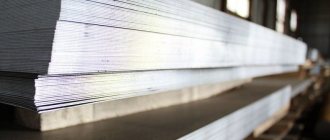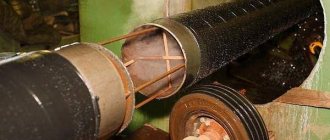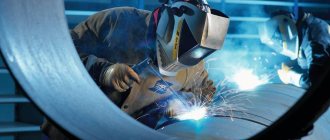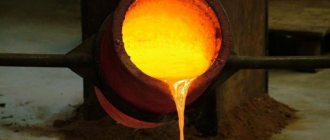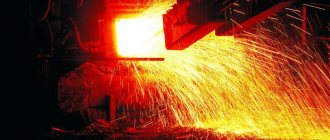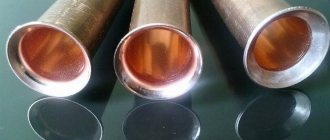The question of whether it is possible to make money in the production of corrugated sheets cannot be answered unequivocally. The market for this building material is considered tight. And in fact, if you go to any specialized store, you can always or almost always buy corrugated sheets, and in any quantity. If the required volume or assortment is not available, then everything you need will be delivered to order without any problems in a matter of days.
However, such an initiative should not be discounted either. “At the very least, it’s hard to call a startup producing corrugated sheets a failure from the start,” says small business expert Igor Malyugin. – The fact is that you won’t find simple solutions in entrepreneurship for a long time. Here, too, first you need to carefully consider and think and only then draw conclusions.” That is why we will try to look at a popular and, it seems, well-known business idea a little more broadly.
1. Looking for competitors 2. Pick up a calculator 3. A few words about the harsh truth
How to make corrugated sheets
In a simple sense, corrugated sheets
is steel that is processed, cut and bent on a specialized production line, resulting in a corrugated shape. Profiling (giving a specific profile) is necessary to achieve the required longitudinal rigidity and high load-bearing capacity. As a result, a relatively thin sheet of cold-rolled steel can withstand heavy loads.
In general, the process of making corrugated sheets
consists of three stages:
- A roll of thin-sheet steel is installed on the unwinder.
- The end of the roll is inserted into a forming machine, through which it acquires the desired profile.
- The already profiled material goes into hydraulic shears, where it is cut according to the specified parameters.
Corrugated sheet production line
The finished product is removed from the receiving device. It is marked, then packaged and sent to the consumer. An automatic production line allows you to set important manufacturing parameters in advance:
- rolling speed;
- the length of one sheet of corrugated board;
- amount.
Depending on the specified parameters, corrugated sheets with different characteristics are obtained. The material is classified:
- corrugated shape;
- wave height (minimum – 8 mm);
- distance between ribs;
- profile width;
- sheet thickness;
- purpose (wall, roofing and load-bearing);
- full and useful width of the sheet.
Please note: the full and usable width of the profiled sheet differs by the thickness of the side overlap, which must be provided when laying the material. In the case of a low-slope roof, not one, but two waves overlap, so the useful width is reduced by another corrugation size. And one more thing: the higher the wave height, the smaller the sheet width.
Profiling of corrugated sheets is carried out in two ways: simultaneous and sequential. In the first case, production proceeds faster, since it involves rolling all the corrugations at once. The product itself is cheaper, since the simultaneous rolling machine is not only cheaper, but also smaller in size than the equipment for the combined method. As a result, costs for the machine itself and production space are saved.
At the profiling stage, corrugated sheets can be given different profile shapes:
- trapezoidal,
- square,
- wavy, etc.
A certain corrugation shape is obtained through the use of different rollers. Depending on the complexity of the profile, the sheet can go through several stands, but profiling always starts from the first of them.
Different profile shapes of corrugated sheets
Requirements for production
The design of production for the production of profiled sheets should follow the following recommendations:
- the equipment room must have a concrete floor with an ideal surface;
- production requires the presence of special equipment with a lifting capacity above 5 tons;
- the temperature in production should not drop below 4 degrees, and when working with pneumatic mechanisms - 10 degrees;
- the room must be equipped with gates for easy unloading of raw materials and loading of finished corrugated sheets;
- It is necessary to provide places for storing coiled steel.
When making equipment for making corrugated sheets with your own hands, you need to fulfill the requirements for its placement:
- Machines are placed so that their components can be accessed during maintenance or inspection.
- For convenience, unwinding devices must be placed close to where raw materials are stored.
- If there is little space and there is not enough space in the room, a warehouse of finished profiled sheets can be arranged in an individual building.
Attention. Fulfillment of all these requirements, plus the presence of good equipment, makes it possible to make profiled sheets 1-12 m long.
There is equipment capable of producing leaves 25 m long.
Types of raw materials for corrugated sheets
The starting material for the manufacture of corrugated sheets
Not only cold-rolled steel can act. On the building materials market you can find profiled sheets made from other raw materials. According to this criterion, the following are distinguished:
- hot-dip galvanized corrugated sheet;
- steel corrugated sheet without protective coating;
- copper and aluminum profiled sheets;
- hot-dip galvanized corrugated sheeting with additional protective and decorative coating;
- profiled sheet of chromium-nickel steel.
We recommend studying: “What you need to know about galvanized corrugated sheets.”
The most expensive are profiled sheets made of aluminum, copper and chromium-nickel steel. There is also special-purpose corrugated sheeting:
- bent;
- with textured embossing;
- with perforation.
Fence made of corrugated sheets with applied texture
Registration moments
For this business, it is better to choose an LLC to start with, because An individual entrepreneur is liable for the company’s obligations with his property.
When registering a company, you can indicate the following OKVED:
- 27.33 “Production of bent steel profiles”,
- 51.53.24 “Wholesale trade of other construction materials”,
- 52.46.73 “Retail trade in metal and non-metallic structures, etc.”
Corrugated sheeting is not subject to mandatory certification, but it is recommended to adhere to the standards of GOST 24045-2016.
For what objects is corrugated sheeting suitable?
Corrugated sheeting can be used in construction:
- hangars;
- warehouses;
- workshops;
- garden and country houses;
- residential buildings, etc.
The material is applicable both for the construction of new buildings and for updating coatings and finishing of existing buildings. In addition to residential buildings, corrugated sheets are used as roofing and facade cladding at industrial facilities.
In general, the material is made from:
- roofing coverings;
- fencing and fencing;
- finishing of external walls;
- internal partitions;
- permanent formwork for foundations and floors.
We recommend: “How to make a fence from corrugated sheets with your own hands.”
The performance characteristics of corrugated sheeting provide the coating and finishing with good tightness. In addition, the material does not weigh down the building, so it avoids the step of strengthening the foundation or walls.
Corrugated roofing structure
What is the difference between corrugated sheet and metal tiles? Rolled metal and types of protective coating
Both corrugated sheets and metal tiles are cold-rolled sheet steel, the strength of which is increased by creating a three-dimensional relief. Each “wave” of the profile, regardless of its shape, serves as a stiffening rib.
The traditional protection of ferrous metal against corrosion is the application of a layer of zinc. The thicker the layer, or weight per unit area, the longer the service life before corrosion occurs.
Metal tiles and roofing sheets are painted at the production stage. To ensure that the coating adheres better to the zinc, a passivating layer and a primer are applied. The sheet is painted or varnished on the reverse side, and a polymer coating is applied on the front side.
The durability of a decorative coating is usually covered by a separate warranty period, which depends on the polymer. Main types:
- polyester is the most inexpensive material, but sensitive to ultraviolet radiation and mechanical damage (due to the small thickness of the layer);
- matte polyester - due to the greater thickness of the layer, it has better resistance to mechanical damage, but it has fewer shades of color;
- plastisol - large layer thickness and good resistance to mechanical stress, the ability to create a textured surface with a three-dimensional relief, but low resistance to fading;
- pural, matte pural - good resistance to all influences and a long warranty period;
- polydifluorite (PVDF) - with a small layer thickness, the performance indicators are not inferior to pural, but the cost is higher than its cost.
In addition to standard polymer coatings, metal tiles have samples that have an improved protective and decorative layer. Instead of polymer, they apply chips of natural stone on a binder base of epoxy or acrylic resins. The appearance of composite metal tiles is visually no different from ceramic or slate roofing.
The main factor influencing the actual service life is the quality of the metal and coatings. The conditional rating of the domestic market looks like this: English and Finnish rolled metal products are the best, and Russian positions.
Continuous flooring made of profiled sheets
Flooring is a structure made of corrugated sheets, which are attached to supporting structures of the covering (beams and purlins) located across the corrugations. Profiled sheets are connected to each other along the long side. For fastening to steel supports, different types of connections can be used:
- on self-tapping screws (installed in pre-drilled holes);
- on dowels installed by shooting;
- on self-tapping self-drilling screws;
- using one-sided spot welding (used for unpainted sheets).
Depending on the purpose of the continuous flooring, the profiles are attached at different points:
- In each wave on the outer supports, through the wave - on intermediate ones. This method of fixation is applicable if the flooring plays the role of a regular covering.
- In every wave on all supports. Reinforced fastening is necessary if the deck is used as a horizontal stiffening diaphragm.
Manufacturing process
Profiled sheet is a production that begins with drawing up a sketch of the system and carrying out mathematical calculations. Next, the color of the coating and the thickness of the flooring are selected.
Only then is a specific production process created using profile bending machines to produce roofing, wall, and floor profiled sheets.
The production technology of corrugated sheets includes the following points:
- Rolled steel is placed in the unwinding device of the rolling machine;
- through the rolling mill, the strip metal reaches the shears, where a control cut is made;
- the length of sheets and their quantity are set from the control panel;
- in automatic mode, the machine rolls sheets;
- cutting sheets to measure is also done in automatic mode, and the finished corrugated sheet reaches the receiving stacker;
- finished leaves must be labeled and packaged in polyethylene film.
Overlapping with corrugated sheets
A simple concrete floor has a high cost and low load-bearing capacity. Its device is very labor intensive. The technology of laying floors on corrugated sheets helped to get rid of these shortcomings. It requires less time and effort, and also reduces costs. The design of the corrugated flooring provides for:
- beams as the basis of the entire structure;
- permanent formwork made of corrugated sheets (plays the role of reinforcement);
- flexible reinforcement, vertical rod anchor and reinforcement mesh;
- concrete pouring.
Construction of a monolithic floor with corrugated sheets
Corrugated sheet
This type of floor design reduces the cost of concrete and reinforcement. This technology is used in the construction of multi-storey buildings, garages, terraces, etc.
Another advantage of covering with corrugated sheets is the possibility of resting on a light supporting frame. Profiled sheet
binds to concrete and takes on part of the load from the floor slab. This allows you to reduce the cost of the foundation, for example, by making it in a columnar form.
In addition, the use of this technology helps to obtain a ready-made ceiling that does not require additional modifications and finishing, which is explained by the presence of a protective and decorative coating on the profiled sheet. But if necessary, the ceiling can always be decorated with plasterboard, suspended panels, or made suspended.
Please note: in addition to corrugated sheeting, which has a decorative coating, it is useful to buy repair paint of the same color. This will help quickly eliminate any damage to the paint layer.
Option for using corrugated sheeting inside a reinforced concrete floor
The advantages of corrugated sheeting as a component of the floor also include:
- low labor intensity;
- reduction of installation costs;
- the ability to implement overlapping of any configuration;
- simple pouring process;
- low weight while maintaining the strength of reinforced concrete;
- the ability to choose different brands of corrugated sheeting depending on your purposes;
- ensuring rigidity and stability in buildings with a metal frame.
Workshop equipment
For the production of corrugated sheets, it makes sense to rent a premises with an area of at least 300 m². Here it is necessary to provide a production area (150 m²), storage space for raw materials (50 m²) and storage of the finished product (100 m²). It is optimal to have a flat floor and at least two gates: for receiving rolled metal and shipping profiled sheets. In addition, you will need to connect communications, including heating and 380 V power supply. To service production processes, you will need specialized equipment with a lifting capacity of 5 tons or more - a beam crane or a monorail.
Packs are formed from ready-made sheets of corrugated sheets, placed on wooden pallets and secured using polypropylene foam or metal belts. Wooden spacers are placed in the places where the sheets come into contact with the constriction and in the corners to prevent deformation during transportation.
Establishing a sales market
The most important part in starting a business is finding buyers. Corrugated sheets are intended for construction, so first of all it is necessary to establish sales channels through construction markets and stores.
Promoting products through our own online store has proven to be successful. Its development and maintenance will cost an average of 30,000 rubles.
Another way is advertising in print media and on the radio. On average, the cost of promotion through different channels will be from 50,000 rubles.
If possible, you can open your own point of sale in the construction market. This path is the easiest. Renting a small room with samples will cost 15,000 rubles per month, but for shipment you will have to hire or purchase a small flatbed truck.
Establishing contractual relationships with construction companies and teams is the most reliable way to establish regular sales.
Participation in construction industry exhibitions helps promote your products, as does placing information about your company in industry directories, magazines and brochures.
Ready-made professional sheet
Manual machines
Manual equipment for the production of profiled sheets is used to meet the needs of small industries. It is often used for the manufacture of metal profiles when organizing the construction of geographically remote objects. Manual machines operate due to significant physical effort, which is one of its disadvantages. Therefore, they are used to produce sheets of small thickness and size.
Manual production lines are conventional sheet metal bending machines. To carry out technological operations, a galvanized metal plate is placed on the work table and fixed with a clamp. Thanks to the movement of special guide parts, a curved profile with the necessary geometric parameters is formed.
Homemade sheet bending machine
Manual machines also differ in other features, which include:
- no more than 150 sheets can be produced in one work shift;
- the width of the work table does not exceed 2.5 m, so it is not used for processing coiled steel;
- the optimal parameters of workpieces for production are 2.5x1.2 m with a thickness of less than 1 mm;
- For efficient operation of the machine, no special room or electricity is required;
- high probability of defects in the form of double application of corrugations or rolls;
- the appearance of microcracks after processing on the protective coating of a metal profile;
- the cost of manual equipment rarely exceeds 100 thousand rubles (domestic manufacturers).
Industrial machines - main operating parameters
Industrial equipment for the production of metal profiles helps to obtain up to 32 linear meters of products per minute. The productivity of the line does not depend on the geometric parameters of the products, the thickness and characteristics of the materials used as raw materials.
Automatic industrial production lines have the following features:
- thin-sheet rolled steel is used as raw material (may or may not have a protective polymer coating);
- the roll is fed to the equipment semi-automatically, but the production itself proceeds without additional intervention;
- the width of the roll processed on machines should not exceed 1250 mm;
- steel sheet with a thickness of 0.45-1.2 mm is suitable for processing;
- the industrial line has a power of 13-17 kW;
- machine productivity – no more than 32 linear. m per minute;
- The average dimensions of the line are 1800x260x170 cm.

